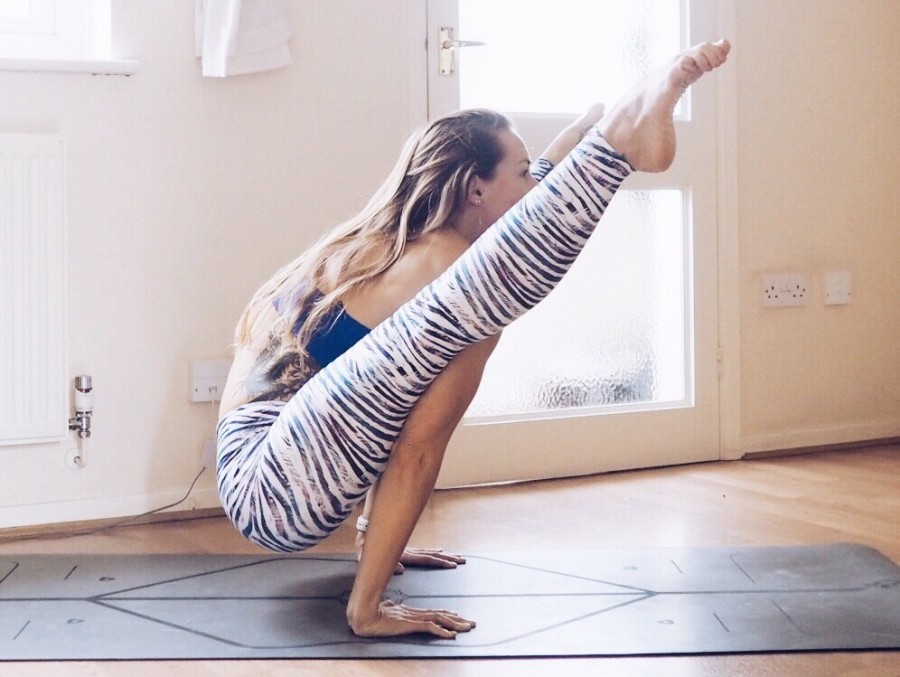With yoga being more popular than ever, there are even more methods coming to the mainstream and if you’re getting a bit confused about all of the different styles of yoga and what some of them mean, have a read below. I put together a little beginners guide for some of the more popular yoga styles, so now you know what to expect when you go to a class or what your friend is talking about when she tells you she’s off to an Iyengar yoga class.
Hatha – This is like the mothership of modern yoga. Hatha is one of the six branches of yoga, developed from Tantra yoga and translates to ‘yoga of forceful effect’. Pretty much every style of yoga you read about below has in some way come from Hatha yoga, it delves deep into the way the body connects to the breath whilst moving through postures.
Ashtanga – This is probably a style of yoga you’ve heard a lot, but you may not have practiced Ashtanga yoga in it’s purest form. It is made up of six set sequences, perform with a rapid flowing motion, with the breath linking every posture. There’s no doubt that it’s a pretty intense style of yoga practice. And if you want to take your ashtanga practice to the next level and feel confident that you know at least the primary series, then head to a Mysore class. In these classes the teacher is not at the front instructing, instead each student works through the sequences on their own, whilst the teacher walks around the class giving hands on adjustments. It’s a great way to get a private class feel, whilst in a group atmosphere.
Vinyasa Flow – This is the style of yoga I’m on my teacher training course for with Yoga London. Vinyasa is translated to “arranging something in a special way” and means to link movements together with breath. It was in a way developed by people who were rebelling against the ashtanga set sequences, wanting to explore something new. It’s very much built upon the ashtanga foundations, but vinyasa flow classes will be much more free and ‘decretive’! This can also be described as power yoga or just flow yoga.
Yin – A slow-paced style of yoga holding poses for around five minutes, with the aim of increasing circulation in the joints and flexibility and focuses on lengthening the connective tissue. It’s a more meditative style of yoga, looking at cultivating inner silence and giving the student an interconnecting quality.
Iyengar – It was developed by B.K.S. Iyengar and has emphasis on detail, precision and alignment in both the postures and pranayama (breath control). Expect to use a lot of props in an Iyengar yoga class, as this helps with the correct alignment, minimising the risk of injury or strain. It’s good to be aware that this doesn’t mean to expect an easy class – Iyengar is still very demanding on the body, mind and breath.
Jivamukti – This is an extremely popular style of yoga at the moment and again it’s built upon the ashtanga sequences, with some vinyasa flow, but what makes Jivamukti different is the inclusion of spirituality and education of the tradition of yoga. You might expect to find more sanskrit being used in a Jivamukti class, along with having a theme and maybe some chanting.
Kundalini – Kundalini yoga is focused around the serpent energy in your body. It’s all about flowing movements that awaken that energy and feed it around the body. It is known as “the yoga of awareness” and aims to “to cultivate the creative spiritual potential of a human to uphold values, speak truth, and focus on the compassion and consciousness needed to serve and heal others.” Expect to see lots of people wearing white in Kundalini classes!
Bikram – I think sometimes there can be a slight confusion between this and ‘hot yoga’. Bikram was founded by Bikram Choudhury and is performed in a hot room (around 40°C) where you will perform a set 26 postures, twice each.
Sivananda – Another form of Hatha yoga, but named after Swami Sivananda, one of the most influential spiritual teachers of the 20th century. This style of yoga has a big focus on the health and wellbeing of the person, with an emphasis on relaxation, breathing, diet and positive thinking.
Restorative – This is all about finding that deep relaxation in a posture, to the point that you might stay in it for up to 20 minutes! Expect bolsters, blankets and eye pillows… basically like nap time for grown ups! I think restorative yoga is underrated, as these days people want a workout and a sweat. There’s nothing wrong with that of course, but we need to remember to give our body time to rest and this is the perfect way to do it.
Hopefully this little post helped clear a few things up for you. The world of yoga is a confusing one with so many styles, but the best thing you can do if to try them all. A lot of the time it’ll come down to how much you like the teacher just as much as how much you like the actual practice.
Love & Light, Cat x
*For more information about my current teacher training with Yoga London, read about my experience here.

